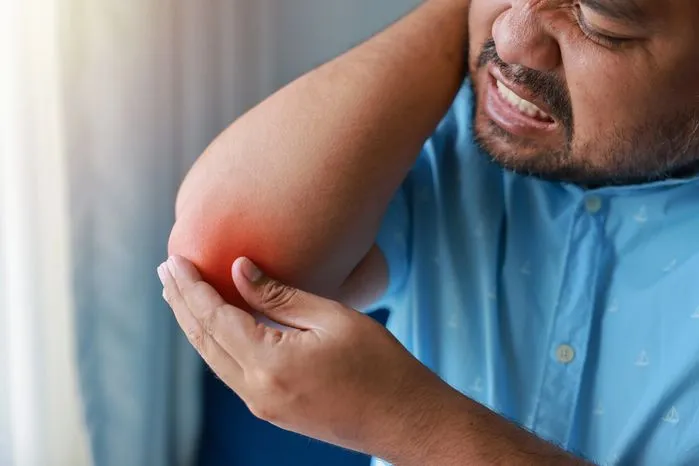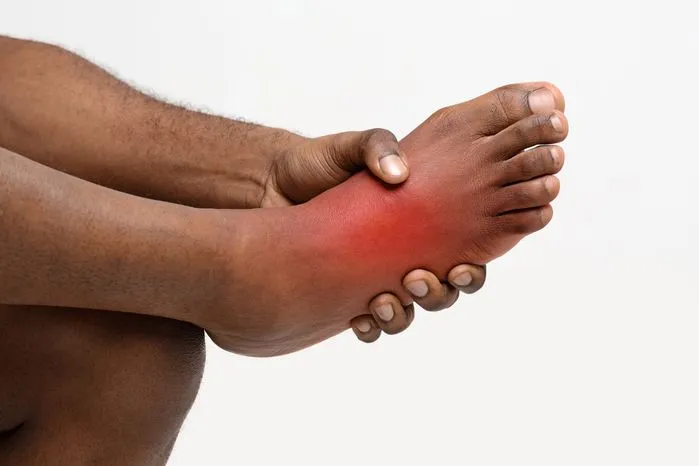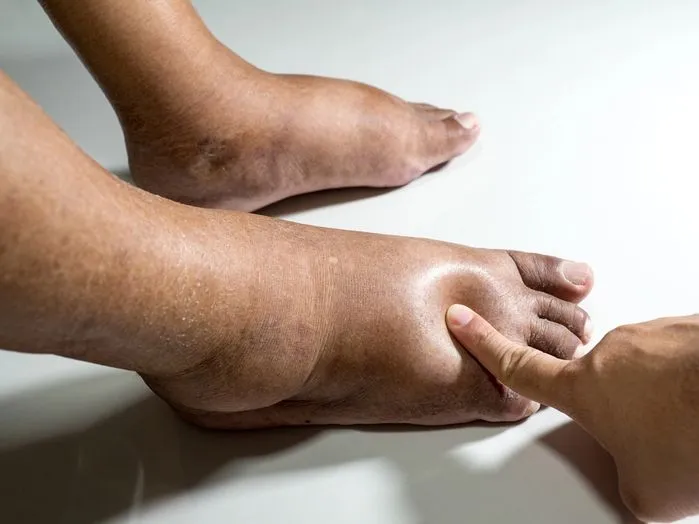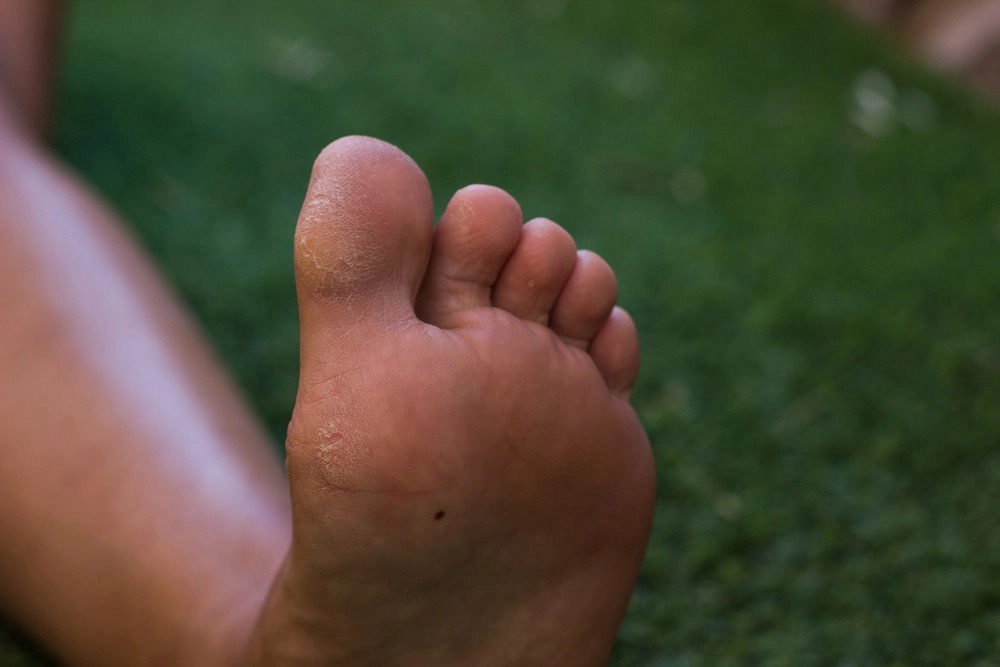
At RelefordInstitute.com, we’ve seen firsthand how metatarsal phalangeal (MTP) joint pain can disrupt more than just your stride—it can affect your entire quality of life. Whether it’s sharp discomfort during daily walks or a dull, persistent ache from long-standing inflammation, we’ve helped countless patients pinpoint the cause and regain pain-free mobility. In this comprehensive guide, we draw on over two decades of clinical experience to explain not only why MTP joint pain happens but also what works, from non-invasive therapies we’ve tested in our practice to advanced treatment protocols that reduce recovery time.
Top 5 Takeaways
1. Don’t ignore early pain.
- MTP joint discomfort is a warning sign. Early treatment prevents long-term damage.
2. Know the main causes.
- Arthritis (osteoarthritis, rheumatoid)
- Injuries (fractures, sprains)
- Poor footwear or overuse
3. Diagnosis requires multiple steps.
- Physical exam and gait analysis
- Imaging (X-ray, MRI, ultrasound)
4. Start with non-surgical solutions.
- Physical therapy
- Anti-inflammatory care
- Proper footwear
5. Real clinical insight matters.
- RelefordInstitute.com uses 20+ years of hands-on experience to guide patient-specific care.
Understanding the Metatarsal Phalangeal Joint
Five long bones, each with a unique shape, form the metatarsal structure. Aligned in a convex arc facing downwards, these bones give our foot its characteristic arched formation. This arrangement facilitates mechanical advantage, enabling us to walk, run, or leap.
Joints between the metatarsal bones and phalanges, or toes, are known as metatarsal phalangeal joints. These joints maintain balance and propel us forward during motion, functioning similarly to a hinge. They permit flexion, extension, and, to some extent, sideways motion.
Common Causes of Joint Pain
Conditions or injuries of various types may trigger pain in the metatarsal phalangeal joint. Arthritis and physical injuries surface as common culprits.
Arthritis, a broad term, refers to over 100 identified types, each related to joint inflammation. Among them are osteoarthritis and rheumatoid arthritis.
Injuries like fractures or sprains also contribute to joint pain. High impact activities or accidents usually cause these injuries.
Symptoms to Watch For
Pain in the metatarsal phalangeal joint can indicate underlying issues, with the intensity varying from minor discomfort to extreme, incapacitating pain.
Swelling around the joint represents another significant symptom. Careful assessment of swelling can reveal crucial details about the issue's severity. Accompanying signs such as heat, redness, and stiffness suggest inflammation in the joint, which requires immediate medical attention if it continues to worsen over time.
Alterations in foot shape, walking difficulties, or callus development under the affected joint due to changes in foot mechanics are all signs to monitor closely.
Diagnosis and Medical Interventions
Detecting metatarsal phalangeal joint pain early requires comprehensive diagnostics. A thorough physical examination, carried out by a doctor, becomes necessary where the patient's foot is palpated to assess tenderness, swelling, and mobility.
To pinpoint the exact cause of discomfort, doctors employ varied imaging techniques. Bone deformities or fractures are identifiable through various tests that provides a detailed view of soft tissues including muscles, tendons, and ligaments.
Medical interventions like corticosteroid injections might be suggested by doctors in some instances to alleviate pain and inflammation.
Effective Treatment Options
Options for treating it range from conservative methods to surgical interventions. Physical therapy and lifestyle changes often serve as primary treatments.
Through physical therapy, muscles around the joint receive strengthening for improved support, strain reduction, and enhanced flexibility. Therapists may recommend calf stretching exercises or foot muscle strengthening routines.
Changes in lifestyle aim to lessen factors worsening the condition. For instance, weight loss can lighten joint pressure, while wearing supportive shoes or avoiding painful activities can also help. Such changes often significantly enhance daily comfort and mobility.
For more severe cases, surgery becomes a consideration.
“Over the past years at the Releford Institute, we’ve treated thousands of patients with metatarsal phalangeal joint pain—from athletes sidelined by overuse injuries to older adults coping with arthritis-related degeneration. One key insight we’ve learned is that early, targeted intervention can dramatically reduce long-term joint damage and restore mobility faster than many realize.”
Supporting Facts and Statistics
At RelefordInstitute.com, we've treated thousands with MTP joint pain. The stats below support what we’ve seen in practice.
1. MTP Joint Degeneration Is Widespread
- 1st MTP joint arthritis is the second most common lower limb osteoarthritis—after the knee.
- Affects both older adults and active younger patients.
- Often linked to biomechanics and overuse.
Source: 🔗 ard.eular.org
2. Arthritis Is a Major Cause of Foot Pain
- Osteoarthritis and rheumatoid arthritis frequently affect MTP joints.
- Symptoms often misinterpreted as aging or fatigue.
- We regularly identify arthritis in patients who’ve gone undiagnosed for years.
Source: 🔗 orthoinfo.aaos.org
3. Sports Injuries Frequently Involve MTP Joints
- Sprains, fractures, and overuse injuries impact metatarsals.
- Common in running, soccer, basketball, and football.
- Delayed care leads to chronic pain and joint damage.
Source: 🔗 apma.org
These stats reflect what we witness daily: early diagnosis, targeted care, and movement-focused recovery make all the difference. Let our experience guide your next steps.
Final Thought & Expert Opinion
Metatarsal phalangeal (MTP) joint pain is more than discomfort—it’s a warning sign that your foundation of movement needs attention.
What We've Learned
Based on over 20 years of treating forefoot conditions, here’s what truly stands out:
- No two cases are identical—customized care matters.
- Early intervention leads to better, long-term outcomes.
- Minor symptoms, if ignored, often evolve into major issues.
Common Patient Mistakes
- Ignoring early symptoms like stiffness or swelling.
- Over-relying on generic inserts or pain meds without diagnosis.
- Delaying care until the pain becomes chronic or mobility is impaired.
What Works Best (From Our Clinical Experience)
- Targeted physical therapy to strengthen support muscles.
- Footwear correction to reduce strain on MTP joints.
- Anti-inflammatory care personalized to pain severity.
- Patient education that encourages proactive, informed self-care.
Our Expert Insight
“Every step matters—and every joint deserves your full attention.”
When you treat your MTP joint pain early and with expert-backed strategies, you don’t just relieve discomfort—you restore full-foot confidence and preserve long-term mobility.
Frequently Asked Questions
1. What is the metatarsal phalangeal joint?
The metatarsal phalangeal joint, or MTP joint, is the area where the long bones of your foot (metatarsals) meet the toe bones (phalanges), playing a crucial role in balance and movement.
2. What causes pain in the metatarsal phalangeal joint?
Pain in the MTP joint can be caused by overuse, arthritis, improper footwear, trauma, or conditions like gout, bunions, or capsulitis.
3. How does arthritis affect the MTP joint?
Arthritis, particularly osteoarthritis or rheumatoid arthritis, can cause inflammation and cartilage deterioration in the MTP joint, leading to stiffness, swelling, and pain.
4. What is capsulitis, and how does it impact the MTP joint?
Capsulitis is inflammation of the joint capsule around the MTP joint, often resulting in pain beneath the ball of the foot and a sensation of walking on a pebble.
5. Can improper footwear contribute to MTP joint pain?
Yes, wearing shoes that are too tight, have high heels, or lack adequate support can place excessive pressure on the MTP joint and exacerbate pain or deformity.
6. How do bunions relate to MTP joint discomfort?
Bunions form when the big toe deviates toward the second toe, misaligning the MTP joint and causing pain, swelling, and difficulty walking.
7. What symptoms indicate a serious MTP joint problem?
Persistent pain, visible swelling, redness, limited range of motion, or deformity in the toe joint are signs that may indicate a more serious MTP joint issue.
8. What are the first steps to treat MTP joint pain at home?
Initial treatment includes rest, ice application, elevation, over-the-counter anti-inflammatory medications, and switching to footwear with proper arch support and cushioning.
9. When should I see a doctor for MTP joint pain?
You should consult a doctor if the pain is severe, persistent for more than a few days, interfering with daily activities, or accompanied by swelling and redness.
10. What medical treatments are available for MTP joint pain?
Medical treatments may include physical therapy, corticosteroid injections, custom orthotics, or, in severe cases, surgical correction such as joint fusion or realignment.
11. Can exercises help relieve MTP joint pain?
Yes, gentle stretching and strengthening exercises targeting the foot and toes can improve joint flexibility, reduce strain, and support recovery from MTP joint pain.
12. How can I prevent pain in the MTP joint from recurring?
To prevent recurrence, maintain a healthy weight, wear supportive shoes, avoid high-impact activities without proper conditioning, and regularly perform foot-strengthening exercises.


















